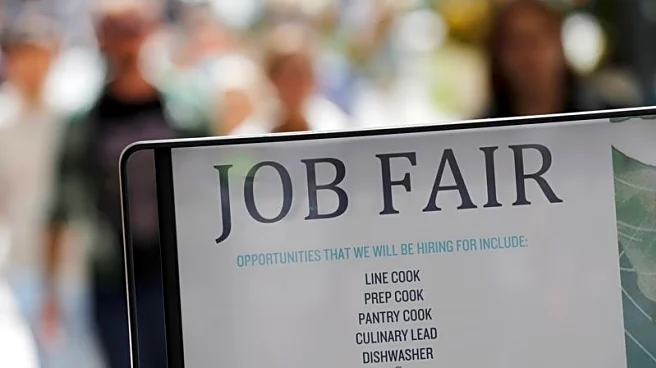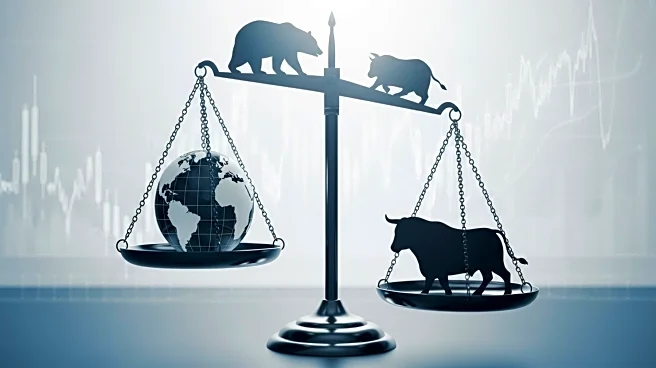What's Happening?
The Labor Department has reported a decrease in the number of Americans filing for unemployment benefits, with claims falling by 14,000 to 218,000 for the week ending September 20. This marks the lowest level of jobless claims in two months, despite signs of a slowing labor market. Analysts had predicted 235,000 new applications, indicating a better-than-expected outcome. The Federal Reserve recently cut its key interest rate by a quarter-point, shifting its focus from inflation to job growth as hiring has slowed significantly. The Bureau of Labor Statistics revised its job gains data, revealing that the labor market was weaker than previously thought, with 911,000 fewer jobs added in the 12 months ending March 2025 than initially reported.
Why It's Important?
The decline in jobless claims suggests that layoffs remain low, which is a positive sign for the labor market. However, the revised job gains data and the Federal Reserve's interest rate cut highlight underlying concerns about economic stability. The Fed's dual mandate to maintain full employment while controlling inflation is becoming increasingly challenging, as inflation remains above the target rate. The labor market's health is crucial for economic growth, and the current situation could impact consumer confidence and spending. Businesses may be hesitant to hire due to economic uncertainties, potentially affecting overall economic recovery.
What's Next?
The Federal Reserve's future interest rate decisions will be closely watched, as they balance the need to support job growth with the risk of exacerbating inflation. The final revisions of the Bureau of Labor Statistics' job data are due in February 2026, which could provide further insights into the labor market's trajectory. Policymakers and businesses will need to navigate these economic challenges carefully to ensure sustained growth and stability.
Beyond the Headlines
The labor market's current state may have broader implications for President Trump's economic policies, particularly regarding tariffs and trade relations. The uncertainty created by these policies could be contributing to business reluctance to hire, impacting long-term economic prospects. Additionally, the ongoing adjustments in the labor market data highlight the complexities of economic forecasting and the importance of accurate data in shaping policy decisions.












